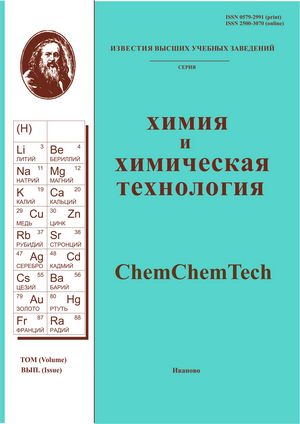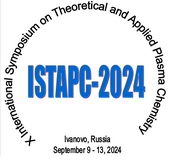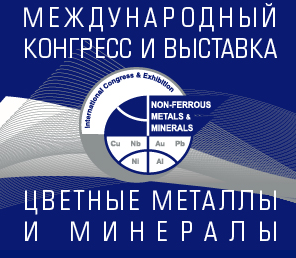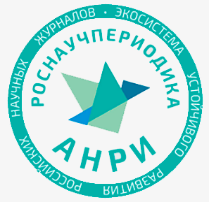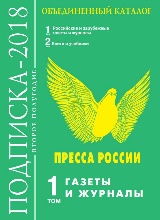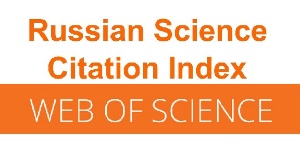СШИТЫЕ И НАПОЛНЕННЫЕ КОМПОЗИТЫ НА ОСНОВЕ ПОЛИОЛЕФИНОВ
Аннотация
В статье приводится обзорный литературный материал ряда авторов по проблеме получения модифицированных полиолефинов в процессе сшивания. Показано, что материалы на основе полиолефинов, отличающихся повышенной теплостойкостью, способствуют улучшению комплекса технических требований по светостойкости, надежности, технологичности применительно к производству и использованию кабельно-проводниковой продукции. В частности, приводятся экспериментальные данные по использованию кремнийорганического карбоксилата олова с целью получения изделий с наилучшими качественными характеристиками. Представлены результаты теоретических и экспериментальных исследований по влиянию состава композиций полиолефинов на кинетику процесса сшивания, а также реологические и теплофизические свойства. Рассмотрена принципиальная возможность изучения влияния дозы облучения на регулирование процесса изменения структуры композитов. Как показали ряд авторов, этот метод позволяет целенаправленно подойти к разработке сшитых композитных материалов с заранее заданными свойствами. Методом радиационно-химического сшивания рассмотрена сравнительная характеристика структуры полимерной основы в присутствии и без различных типов наполнителей в высоконаполненных композитах. Представлены данные по влиянию условий радиационного сшивания на плотность сетки и механические свойства сшитого полиэтилена при высоких температурах. Приводятся данные по химической стойкости сшитого полиэтилена к действию различных химических реагентов, таких как ацетон, бензол, толуол, четыреххлористый углерод, диэтиловый эфир, бензин-76, и смазок. Одним из важных обстоятельств при изучении структуры и свойств полимерных композитов является возможность математического моделирования вязкоупругой податливости густосетчатых полимеров во взаимосвязи с методологией ее теоретической параметрической идентификации с последующим прогнозированием результатов термомеханического эксперимента.
Для цитирования:
Мамедли У.М. Сшитые и наполненные композиты на основе полиолефинов. Изв. вузов. Химия и хим. технология. 2018. Т. 61. Вып. 6. С. 4-16
Литература
Pankratov A.V., Matyukhina G.N., Fridman O.A. Methods for the preparation of crosslinked polyolefins, properties and ap-plications. Plasticheskie massy. 2006. N 5. P. 26-28 (in Russian).
Ivanov V.V., Krivolapova O.V., Belova L.O., Kirilin A.D. Comparison of the activity of organotin compounds and sulphonic acid in the production of cross-linked polyethylene. Plasticheskie massy. 2013. N 2. P. 19-24 (in Russian).
Khonakdar H.A., Morshedian J., Eslami H., Shokrollahi F. Study of heat shrinkability of crosslinked low-density polyeth-ylene/poly(ethylenevinyl acetate) blends. J. Appl. Polymer Sci. 2004. V. 91. P. 1389-1395. DOI: 10.1002/app.13426.
Dementyev A.G., Matyukhina G.N., Pankratov A.V. Deforming chemically crosslinked polyethylene foam. 1. Thermal defor-mation of polyethylene foam. Plasticheskie massy. 2013. N 4. P. 8-12 (in Russian).
Chuleeva E.V., Zolotarev V.M. Crosslinkable polyolefin compositions that do not support combustion. Kinetics of crosslinking, rheological and thermophysical properties. Plasticheskie massy. 2015. N 9-10. P. 10-14 (in Russian).
Osipchik V.S., Sukhinina A.V., Gureev Yu.A. Investigation of the properties of radiation-cross-linked insulating compositions based on sevilene and mineral fillers for the production of cable heat-shrink products. Plasticheskie massy. 2008. N 6. P. 31-33 (in Russian).
Sukhinina A.V., Osipchik V.S. Study of the influence of the absorbed radiation dose on the structure and efficiency of the radia-tion-chemical cross-linking of sevilene filled with aluminum trihydrate. Plasticheskie massy. 2009. N 7. P. 33-36 (in Russian).
Osipchik V.S., Suhinina V.V., Mzhachikh E.I. Investigation of atmospheric-сracking properties of a composition based on sevilene, sensitized to radiation-chemical cross-linking, for the manufacture of cable heat-shrink products. Plasticheskie massy. 2009. N 2. P. 53-55 (in Russian).
Lyamkin D.I., Skroznikov S.V., Zheremekin A.N., Kobets A.V., Cherkashin N.A., Cherepennikov S.V. Comparative eval-uation of the possibility of using gel-fraction indicators and grid density to characterize the degree of cross-linking and operational properties of radiation-cross-linked polyethylene for cable insulation. Plasticheskie massy. 2012. N 3. P. 14-37 (in Russian).
Lyamkin D.I. Mechanical properties of polymers. M.: Dmitry Mendeleev University of Chemical Technology of Russia. 2000. 64 p (in Russian).
Novikov G.K., Smirnov A.I., Fedchishin V.V. On the fulfillment of the Kramers-Kulenkampf law during the course of the cross-linking of polyolefin cable. Plasticheskie massy. 2010. N 8. P. 35-37 (in Russian).
Novikov G.K. Plasma electrotechnologies for the modification and control of the defectiveness of polyolefin cable insulation. Ir-kutsk: ISTU. 2008. 100 p (in Russian).
Novikov G.K. Ultraviolet radiation of an electrical barrier discharge in the technology of cross-linking of polymer cable insulation. Elektrichestvo. 2008. N 7. P. 65-68 (in Russian).
Novikov G.K., Fedchishin V.V. Electret effect in polyolefins, wave and corpuscular model of coronaelectret polarization. Elektrichestvo. 2008. N 12. P. 8-11 (in Russian).
Beloshenko V.A., Voznyak A.V., Voznyak Yu.V., Kiselev V.A. Properties of amorphous-crystalline polymers modified with equal-channel multi-angle extrusion and radiation irradiation. Plasticheskie massy. 2013. N 10. P. 13-18 (in Russian).
Sergeeva L.M., Fainleib A.M., Tolstov A.L., Bardash L.V. Influence of radiation exposure on the properties of polyolefins and their mixtures with other polymers. Polimernyj Zhurn. 2006. V. 28. N 4. P. 271-283 (in Russian).
Kurtz S.M., Mazzucco D., Rimnac C.M., Schroeder D. Anisotropy and oxidative resistance of highly crosslinked UHMWPE after deformation processing by solid-state ram extrusion. Biomaterials. 2006. V. 27. N 1. P. 24-34. DOI: 10.1016/j.biomaterials.2005.05.102.
Reinholds I., Kalkis V., Maksimov R.D., Zitsans J., Meri Mery R. The effect of radiation modification and of a constant mag-netic field on deformation properties of the mixed polymer composite. Mekhanika Kompozitnykh Materialov. 2001. V. 47. N 5. P. 707 (in Russian).
Cybo J., Maszybrocka J., Duda P., Bartczak Z., Barylski A., Kaptacz S. Properties of ultra-high-molecular-weight polyeth-ylene with a structure modified by plastic deformation and electron-beam irradiation. J. Appl. Polymer Sci. 2012. V. 125. P. 4197-4208. DOI: 10.1002/app.36572.
Philips A., Zhu P., Edward G. Simple Shear Deformation of Polypropylene via the Equal Channel Angular Extrusion Process. Macromolecules. 2006. V. 39. N 17. P. 5796-5803. DOI: 10.1021/ma0607618.
Wang T., Tang S., Chen J. Effects of processing route on morphology and mechanical behavior of polypropylene in equal chan-nel angular extrusion. J. Appl. Polymer Sci. 2011. V. 122. N 3. P. 2146-2158. DOI: 10.1002/app.34335.
Qin J., Murata T., Wu X., Kitagawa M., Kudo M. Plastic deformation mechanism of crystalline polymer materials in the equal channel angular extrusion process. J. Mat. Proc.Techn. 2012. V. 212. N 7. P. 1528- 1536. DOI: 10.1016/j.jmatprotec. 2012.02.015.
Beloshenko V.A., Varyukhin V.N., Voznyak A.V., Voznyak Yu.V. Polyoxymethylene orientation by equal-channel multiple angular extrusion. J. Appl. Polymer Sci. 2012.
V. 126. N 3. P. 837-844. DOI: 10.1002/app.36971.
Beloshenko V., Spuskanyuk V. ECAE Methods of Structure Modification of Materials. Intern. J. Mater. Chem. 2012.
V. 2. P. 145-150. DOI: 10.5923/j.ijmc.20120204.06.
Beloshenko V.A., Voznyak A.V., Voznyak Yu.V. Control of the mechanical and thermal properties of semicrystalline polymers via a new processing route of the equal channel multiple angular extrusion. Polymer Eng. Sci. 2014. V. 54.
N 3. P. 531–53953. DOI: 10.1002/pen.23583.
Flores A., Ania F., Balta-Calleja F.J. From the glassy state to ordered polymer structures: A microhardness study. Polymer. 2009. V. 50. P. 729-746. DOI: 10.1016/j.polymer.2008.11.037.
Beloshenko V.A., Voznyak A.V., Voznyak Yu.V., Dudarenko G.V. Equal-channel multiple angular extrusion of polyethylene. J. Appl. Polymer Sci. 2013. V. 127. N 2. P. 1377- 1386. DOI: 10.1002/app.37993.
Kozlov G.V., Novikov V.U., Beloshenko V.A., Zaikov G.E. Change in the mechanism of deformation and structure in the pro-cess of solid-phase extrusion of polymerisation-filled compositions. Plasticheskie massy. 2001. N 3. P. 21-22 (in Russian).
Markov A.V., Ivanov V.V., Kopylov V.M., Kuleznev V.N., Romanov A.S., Slavin G.S. A dry dispersed modifier of polyole-fins and their copolymers. RF Patent N 2304597. 2007 (in Russian).
Markov A.V., Ivanova E.V., Persits V.G., Kuleznev V.I. Investigation of peroxide cross-linking polyethylene by rheological method. Uchen. Zapiski MITKhT im. M.V. Lomonosova. 2004. N 10. P. 42-45 (in Russian).
Markov A.V., Ivanov V.V., Kuleznev V.I., Krivolapova O.V., Persits V.G. Study of thermal stability of melts of silanol-crosslinkable polyethylene compositions. Plasticheskie massy. 2009. N 5. P. 11-14 (in Russian).
Markov A.V., Kuleznev V.N., Persits V.G. Orientation stretching of silanol-crosslinked polyethylene films. Plasticheskie massy. 2007. N 11. P. 5-7 (in Russian).
Alpern V.D., Kubantsev K.I. Silicone crosslinkable high density polyethylene from PADANAPLAST SOLVAY for pipes and fittings for heating and water supply systems. Plasticheskie massy. 2006. N 9. P. 3-6 (in Russian).
Kuleznev V.N., Shershnev V.A. Chemistry and physics of polymers. M.: Kolos. 2007. 368 p (in Russian).
Markov A.V., Kuleznev V.N., Ivanov V.V., Persits V.G., Markov V.A., Krivolapova O.V. Heat resistant films of silanol cross-linked polyethylene. Plasticheskie massy. 2010. N 9. P. 18-22 (in Russian).
Dai K., Zhang Y.C., Tang J.H., Ji X., Li Z.M. Anomalous attenuation and structural origin of positive temperature coefficient (PTC) effect in a carbon black (CB)/poly(ethylene terephthalate) (PET)/polyethylene (PE) electrically conductive microfibrillar pol-ymer composite with a preferential CB distribution. J. Appl. Polymer Sci. 2012. V. 125(S1). P. E561-E570. DOI: 10.1002/app.36521.
Huang S.J., Lee J.K., Ha C.S. Polymeric positive-temperature-coefficient materials: dynamic curing effect. Colloid Polymer Sci. 2004. V. 282. P. 575-582. DOI: 10.1007/s00396-003-0980-4.
Zheng Q., Shen L., Li W., Song Y., Yi X. Nonlinear conductive properties and scaling behavior of conductive particle filled high-density polyethylene composites. Chinese Sci. Bull. 2005. V. 50. N 5. P. 385-395. DOI: 10.1360/04wb0095.
Xie H., Dong L., Sun J. Influence of radiation structures on positive-temperature-coefficient and negative-temperature-coefficient effects of irradiated low-density polyethylene/carbon black composites. J. Appl. Polymer Sci. 2005. V. 95. P. 700-704. DOI: 10.1002/app.21220.
Das N.C., Chaki T.K., Khastgir D. Effect of filler treatment and crosslinking on mechanical and dynamic mechanical properties and electrical conductivity of carbon black filled ethylene vinyl acetate copolymer composites. J. Appl. Polymer Sci. 2003. V. 90(8). P. 2073-2082. DOI: 10.1002/app.12811.
Markov V.A., Kandyrin L.B., Markov A.V., Sorokina E.A. Effect of silanol crosslinking on the electrical characteristics and heat resistance of polyethylene composites with technical carbon. Plasticheskie massy. 2013. N 10. P. 21-24 (in Russian).
Xie H., Deng P., Dong L., Sun J. LDPE/Carbon black conductive composites: Influence of radiation crosslinking on PTC and NTC properties. J. Appl. Polymer Sci. 2002. V. 85. N 13. P. 2742-2749. DOI: 10.1002/app.10720.
Tsai C.S., Liu C.I., Tsao K.Y., Chen K.N., Yeh J.T., Huang C.Y. Effect of Initiator on the Over-Voltage Positive Temperature Coefficient of Linear Low Density Polyethylene/Carbon Black Nano Composites. Macromol. Symp. 2009. V. 286. P. 125-134. DOI: 10.1002/masy.200951216.
Lee G.J., Han M.G., Chung S.Ch., Suh K.D., Im S.S. Effect of crosslinking on the positive temperature coefficient stability of carbon black-filled HDPE/ethylene-ethylacrylate copolymer blend system. Polym. Eng. Sci. 2002. V. 42. N 8. P. 1740-1747. DOI: 10.1002/pen.11067.
Yi X.S., Zhang J.F., Zheng Q., Pan Y. Influence of irradiation conditions on the electrical behavior of polyethylene carbon black conductive composites J. Appl. Polymer Sci. 2000. V. 77. P. 494-499. DOI: 10.1002/(SICI)1097-4628(20000718)77:3-494::AID-APP4-3.0CO;2-K.
Markov V.A., Kandyrin L.B., Markov A.V., Gorodnitsky M.S. Influence of crystallization of polymers on the electrical re-sistance of their compositions with technical carbon. Konstruktsii iz kompozitsionnykh materialov. 2013. N 3. P. 35-40 (in Rus-sian).
Jong H.K., Hyun-Nam C., Seong H.K., Jun Y.K. PTC behavior of polymer composites containing ionomers upon electron beam irradiation. Macromolecular Research. 2004. V. 12. N 1. P. 53-62. DOI: 10.1007/BF03218995.
Guseinova Z.N. Study of the resistance of selenium-containing cross-linked polyethylene to the action of various chemical rea-gents and lubricants. Plasticheskie massy. 2011. N 12. P. 14-15 (in Russian).
Kikel V.A., Osipchik V.S., Lebedeva E.D. Comparative analysis of the structure and properties of cross-linked polyethylene. Plasticheskie massy. 2005. N 8. P. 3-6 (in Russian).
Gorbunova T.L., Gaevoiy N.V., Gerasimov K.V., Chalykh A.E., Kalugina E.V. The effect of chlorinated water on peroxided-cross-linked PEH-a. Plasticheskie massy. 2009. N 9. P. 40-46 (in Russian).
Gorbunova T.L., Ioffe A.A., Evseeva K.A., Kalugina E.V. Thermooxidizing aging of peroxidised cross-linked PE-REX at elevated temperatures and under conditions of long-term storage. Plasticheskie massy. 2009. N 10. P. 22-27 (in Russian).
Kim B.C., Hwang S.S., Lim K.Y., Yoon K.J. Toughening of PP/EPDM blend by compatibilization. J. Аppl. Polymer Sci. 2000. V. 78(6). P. 1267-1274. DOI: 10.1002/1097-4628(20001107)78:6<1267::AID-APP130>3.0.CO;2-B.
Longxiang Tang, Baojun Qu, Xiaofeng Shen. Mechanical properties, morphological structure, and thermal behavior of dynami-cally photocrosslinked PP/EPDM blends. J. Appl. Polymer Sci. 2004. V. 92. P. 3371-3380. DOI: 10.1002/app.20340.
Bauman N.A., Volkov A.M., Ryzhikova I.G., Galibeev S.S., Volfson S.I. Improvement of a complex of properties of mixtures of polypropylene and ethylene-propylene rubber by treatment with peroxide during melt mixing. Promyshlennoe proizvodstvo i ispol'zovanie elastomerov. 2009. N 4/5. P. 20-23 (in Russian).
Bauman N.A., Volkov A.M., Ryzhikova I.G., Galibeev S.S., Volfson S.I. Influence of the molecular structure of ethylene-propylene rubber on the efficiency of the processes of peroxide modification of PP / EPDM binary mixtures. Kauchuk i Rezina. 2010. N 4. P. 11-14 (in Russian).
Bauman N.A., Volkov A.M., Ryzhikova I.G., Galibeev S.S., Volfson S.I. A study of the effect of peroxide modification pro-cesses on the morphology of impact-resistant PP and EPDM mixtures by electron microscopy. All-Russian Scientific School for Youth. "Carrying out scientific research in the field of innovations and high technologies of the petrochemical complex". Kazan. 2010. P. 105 (in Russian).
Gilimyanov F.G. RF Patent N 2241009. 2004 (in Russian).
Ryzhikova I.G., Volkov A.M., Bauman N.A., Kazakov Yu.M., Volfson S.I. Features of modification of binary PP / DPPTT mixtures with an organic peroxide-polyfunctional vinyl monomer system during the process of extrusion. Part 1. Influence of the molecular mass characteristics of EPDM, the chemical nature of the polar vinyl monomer co-agent of the peroxide extrusion modi-fication of the PP / EPDM resin mixture on the impact strength and the MFR values of the final products. Plasticheskie massy. 2013. N 8. P. 40-45 (in Russian).
Kazanchyan A.E., Osipchik V.S., Chalaya N.M., Kikel V.A. Modification of the properties of chemically crosslinked polyeth-ylene with thermoplastic elastomers. Plasticheskie massy. 2012. N 1. P. 3-7 (in Russian).
Pankratov A.V., Matyukhina G.N., Panov Yu.T., Fridman O.A. Effect of mineral fillers on the properties of chemically cross-linked polyethylene foam. Plasticheskie massy. 2010. N 7. P. 32-34 (in Russian).
Kovriga V.V., Pyatin I.N., Samoiylov S.V., Pendik S.S., Sergeev V.I. Investigation of the temperature dependences of the tear resistance of a crosslinked polyethylene matrix reinforcing element. Plasticheskie massy. 2011. N 9. P. 44-46 (in Russian).
Gzhibovskiy N.V., Volkov R.A. Analysis of the economic efficiency of heat networks made of cross-linked polyethylene. Plas-ticheskie massy. 2011. N 9. P. 46-51 (in Russian).
Evseeva K.A., Ivanov A.I., Kalugina E.V. New in the method for assessing the degree of crosslinking of polyethylenes. Plas-ticheskie massy. 2010. N 3. P. 42-45 (in Russian)
Ulitin N.V., Deberdeev T.R., Deberdeev R.Ya. Some of the viscoelastic properties of the crosslinked network polymers. Theo-retical calculation. Plasticheskie massy. 2012. N 2. P. 34-39. (in Russian).
Zolina L.I., Kutyanina L.G., Sutorshina L.M., Sobko T.E. Mechanodispersion of wastes of spatially cross-linked polymers. Plasticheskie massy. 2005. N 11. P. 44-46 (in Russian).

